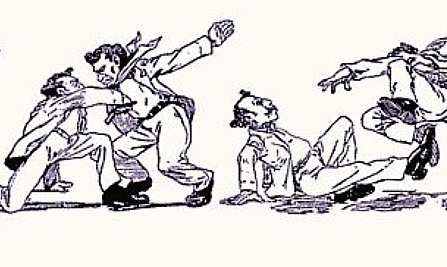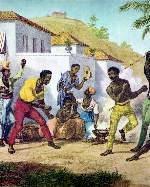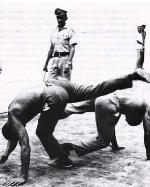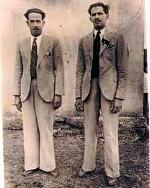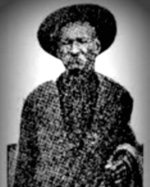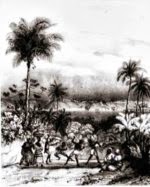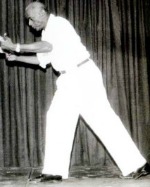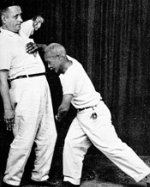The Capoeira Fighter in Brazil’s Criminal Underworld
Talk the Talk
The o malandro was a criminal who tended to carry a barber’s straight razor known as the navalha, which was easily hidden but could be used with deadly effect.
Walk the Walk
There were many famous gangsters during this part of capoeira history, Manduca de Praia is just one example.
This notorious and legendary figure was in many ways a typical o malandro.
He was known for his sense of style and elegance and is thought to have been wanted for no less than twenty-seven murder charges.
This notorious and legendary figure was in many ways a typical o malandro.
He was known for his sense of style and elegance and is thought to have been wanted for no less than twenty-seven murder charges.
Capoeira Quote
"Capoeira is treachery!"
~ Mestre Bimba ~
~ Mestre Bimba ~
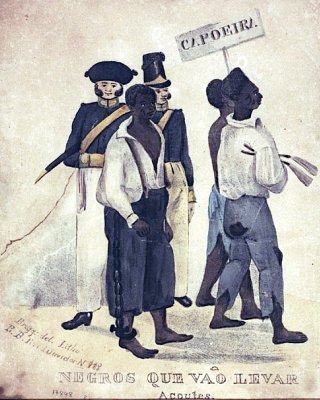 Capoeira history is one of the most intriguing of any world martial arts. Its exact origins are unknown, however, it is known that it was developed by African slaves who were taken to Brazil in the sixteenth century by Portuguese conquistadors. The captives knew that to learn martial arts openly would have meant severe punishment, so the deadly capoeira moves were hidden in dance.
Capoeira history is one of the most intriguing of any world martial arts. Its exact origins are unknown, however, it is known that it was developed by African slaves who were taken to Brazil in the sixteenth century by Portuguese conquistadors. The captives knew that to learn martial arts openly would have meant severe punishment, so the deadly capoeira moves were hidden in dance.The End of Slavery in Brazil
In the nineteenth century, the best martial arts experts in the country were students of capoeira. Brazil saw a legal end to slavery at the same time as the United States, 1888, and this began a difficult transitional period for former slaves, who now had to provide basics like food and shelter for themselves.The country saw mass unemployment overnight which inevitably led to a rise in the criminal underworld. For the talented capoeira fighter, this provided new opportunities and as leaders of gangs, many were suddenly able to earn good money and command respect within the community.
The Criminalization of Capoeira
The authorities soon made the link between the practice of capoeira and the criminal gangs. The art was banned and severe punishments were dished out to those caught practising it. A capoeirista could have his Achilles tendons sliced if caught so many would use a street name to hide their real identities, making capture and prosecution more difficult for the authorities.The ‘o malandro’ was an archetype figure in the criminal underworld of Brazil in the late nineteenth - early twentieth century who was an expert capoeira fighter and a master con artist. The o malandro’s contribution to martial arts history in Brazil cannot be overstated and his fighting skill, cunning and sharp mind awarded him respect and fear alike. In this climate, legendary figures sprung up such as Mestre Praia, Mestre Nascimento Grande and Mestre Besouro Manganga who were famed for their ability to outwit the police and to evade capture.
Mestre Bimba and the Legitimization of Capoeira
For years, those who wanted to learn martial arts in Brazil were hunted down until the art was only being practised in Rio de Janeiro, Recife and Salvador. It seemed that capoeira was set to become no more than a set of stories relegated to the history of fighting until in the early years of the twentieth century, Manoel dos Reis Machado, more commonly known as Mestre Bimba, legitimized the art.One of the greatest capoeirista in the martial art’s history, Mestre Bimba added a code of ethics and introduced it to people outside of the world of crime, selling it as a part of Brazil’s cultural heritage and highlighting the more positive aspects of capoeira history.
Written by Andrew Griffiths – Last updated 16/06/2023. If you like
what you see, consider following the History of Fighting on social media.
Further Reading:
Capoeira: From Crime to Culture. [Internet]. 2012. Library of Congress. Available from: http://blogs.loc.gov/law/2012/10/capoeira-from-crime-to-culture/ [Accessed 9 Nov 2012].O Malandro and Crime. [Internet]. 2012. Rensselaer Polytechnic Institute. Available from: http://capoeira.union.rpi.edu/history.php?chapter=Malandro [Accessed 9 Nov 2012].
The Prohibition of Capoeira. [Internet]. 2011. Live Capoeira. Available from: http://voices.yahoo.com/the-prohibition-capoeira-8223787.html?cat=37 [Accessed 9 Nov 2012].
More Capoeira History
Capoeira History Home
An overview of the history of capoeira from its early roots, its development by slaves in Brazil, how it flourished amongst criminals and its further development and legitimisation by Mestre Bimba in the early twentieth century.
An overview of the history of capoeira from its early roots, its development by slaves in Brazil, how it flourished amongst criminals and its further development and legitimisation by Mestre Bimba in the early twentieth century.
The Roots of Capoeira
The exact roots of capoeira are unknown and largely unstudied. This article explores the possible beginnings of capoeira history and looks at how and why it became a part of the culture amongst Brazilian slaves from the sixteenth century onward.
The exact roots of capoeira are unknown and largely unstudied. This article explores the possible beginnings of capoeira history and looks at how and why it became a part of the culture amongst Brazilian slaves from the sixteenth century onward.
Mestre Manduca da Praia – The Elegant Capoeira Fighter
Mestre Manduca da Praia, known as ‘The Elegant Capoeira Fighter’ was a nineteenth century Brazilian martial artist who was not only a ferocious warrior, but managed to maintain his standing as a respectable business man with in his community.
Mestre Manduca da Praia, known as ‘The Elegant Capoeira Fighter’ was a nineteenth century Brazilian martial artist who was not only a ferocious warrior, but managed to maintain his standing as a respectable business man with in his community.
Jose Antonio do Nascimento
Jose Antonio do Nascimento was one of the best fighters of the nineteenth century. His skills earned him a fearsome reputation and his size and prowess earned him the nickname Nascimento Grande (Big Birth).
Jose Antonio do Nascimento was one of the best fighters of the nineteenth century. His skills earned him a fearsome reputation and his size and prowess earned him the nickname Nascimento Grande (Big Birth).
Mestre Besouro Manganga
Besouro Manganga was such a prolific capoeira fighter that people believed him to have magical powers (known as corpo fechado). His agility and nimbleness helped him avoid capture time and time again, and even when cornered by police, he would usually come out on top.
Besouro Manganga was such a prolific capoeira fighter that people believed him to have magical powers (known as corpo fechado). His agility and nimbleness helped him avoid capture time and time again, and even when cornered by police, he would usually come out on top.
Mestre Bimba
Mestre Bimba is important in capoeira history because of the role he played in legitimizing the art. By introducing a code of ethics, set training methods and a number of new techniques, he helped change capoeira from an illegal discipline associated with crime, to an iconic cultural pastime.
Mestre Bimba is important in capoeira history because of the role he played in legitimizing the art. By introducing a code of ethics, set training methods and a number of new techniques, he helped change capoeira from an illegal discipline associated with crime, to an iconic cultural pastime.
Angola Capoeira
The Angola style of capoeira is one of the two main systems of the art and was introduced in 1942 by Mestre Pastinha. Unlike the other style, Regional capoeira, it focuses the individual development of each capoeirista as opposed to practicing set sequences and training methods and is more akin to the type of capoeira practiced prior to the 20th century.
The Angola style of capoeira is one of the two main systems of the art and was introduced in 1942 by Mestre Pastinha. Unlike the other style, Regional capoeira, it focuses the individual development of each capoeirista as opposed to practicing set sequences and training methods and is more akin to the type of capoeira practiced prior to the 20th century.
The images on this site are believed to be in the public domain, however, if any mistakes have been made and your copyright or intellectual rights have been breeched, please contact andrew@articlesonhistory.com.

